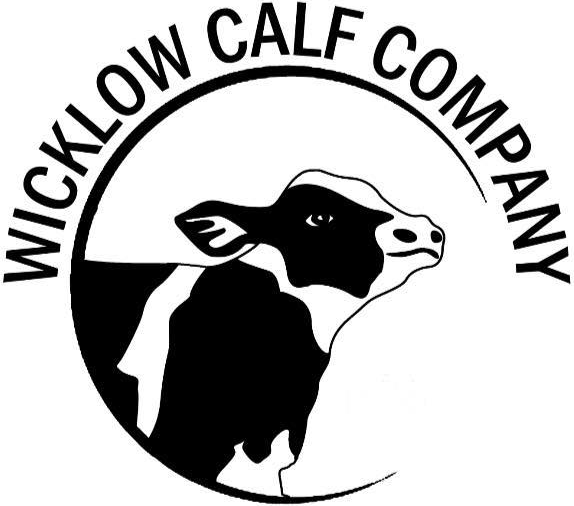Feeding Tips
Feeding temperature & Mixing rates
Calves should receive our milk replacer mixed at 125grams per litre. It is essential to follow this rate to get the correct thrive for your calves. Milk should be mixed at 50° and always fed at the same temperature every day we recommend feeding our products at 42°C. Always feed the youngest calves first which ensures their milk is the right temperature.
Contact our office if you want a complementary measure cup and thermometer to make sure that you are following our guidelines
Weigh
Weigh out the amount of powder needed to feed all of your calves. While weighing, take your time; rushing allows more opportunity for error. Periodically calibrate your scale to ensure accurate measurements.
Mix
First, fill the bucket with half of the total volume of water needed. A water meter is a helpful tool to measure the amount of the water, rather than volumetric measuring that is less accurate. Ensure that the water is 50°-55 °. Use a thermometer to measure temperature; this will make sure that the correct water temperature is being easily and accurately reached.
Then, pour all of the powder on top of the water. Mix with a whisk or mechanical mixer as you add the remaining water needed to reach the total volume of solution required to feed all of the calves.
Before feeding the milk replacer, inspect closely to ensure that all powder is thoroughly mixed.
Serving size
Assure the appropriate volume of milk replacer is fed to each calf at every feeding.
Milk replacer can be delivered once a day, twice a day, three times a day or with automated calf feeders. Please check our feeding programme for more info. Select the feeding programme that will best suit you.
Feeding
Feeding a consistent volume of milk replacer to each calf is critical.
Buckets: It can be difficult to deliver a consistent volume of milk replacer to calves with buckets, as calves tend to spill and tip their buckets. Assure buckets are properly secured, and to improve consistency with buckets, use a flow meter or mark the correct volume on each bucket.
Teats: Feeding calves with Teats can make it easier to deliver a consistent diet. However, Teats do have their challenges. Be conscious of any signs of wear or cracks on the nipple, as these allow a greater risk of bacteria buildup. Also, check that the valve is working properly and the opening is not too large – milk replacer should only drip when the Teat is inverted. If properly maintained, Teat feeders are the most effective way to feed a calf.
Bottle or Teat, consistency is still the key to feeding calves. Stick to established feeding times that are equally spaced, and take the time to focus on consistency in mixing and delivery.
Temperature
Temperature upon delivery to the calf is just as important as the temperature while mixing. The target temperature of the milk replacer fed to the calf is 40°. Check the temperature of the milk replacer fed to the first calf, a middle calf and the last calf fed.
Batch sizes
The batch size the calves are kept in very much depends on the age grouping and the feeding system. Calves being fed using a computerised system can be kept in batches of up to 30 calves.
Bought in calves should be kept in batches of no more than 15 calves. To reduce stress and reduce the spread of disease make sure and leave calves in there groups until the end of the rearing process.
Clean Straw and water
Ensure water troughs are clean. It is good practice to check them every day when the pens are bedded. Straw should always be offered to calves in racks. It isn’t enough to rely on them taking straw from the bedding. Feeding straw in racks increase the intake and reduces the spread of disease.
Feeding Colostrum
Every dairy farmer is aware of the importance of giving young calves adequate colostrum. The first feed should be in the first 4 hours of life. Immunoglobulin levels in colostrum are very variable please use the guidelines below to establish which is the best colostrum to feed. The highest Immunoglobulin levels are found in the first few hours after calving.
Animals that have been on the unit the longest have the greatest resistance to disease’s present on the farm. Calves being produced from heifers should be fed colostrum from a cow that has been on the unit for at least 3 lactations.
It is good practice to freeze colostrum of good quality. Colostrum check will help establish the quality. Ideally it should be stored in plastic containers which will hold 3 litres this represents a single feed for a new born calf. Colostrum should be frozen rapidly and thawed slowly by placing the container in warm water.
Cold Weather
Cold weather is stressful for calves and those that are exposed to the cold are predisposed to pneumonia. When calves are not fed adequately in cold temperatures, they don’t grow as quickly; they are using their energy to keep warm instead. If calves are shivering after feeding, it is a sign that they are cold and are not being fed adequately. A good rule of thumb, Teagasc says, is to increase the amount of milk replacer by 2% for every degree the temperature falls below 10°.









